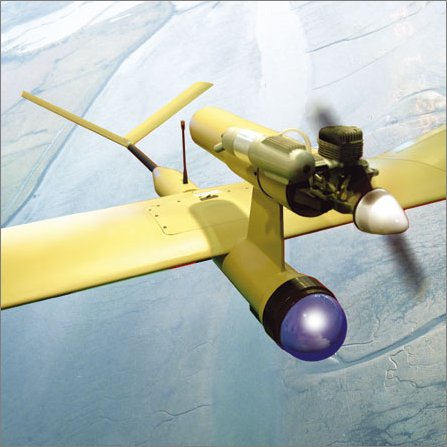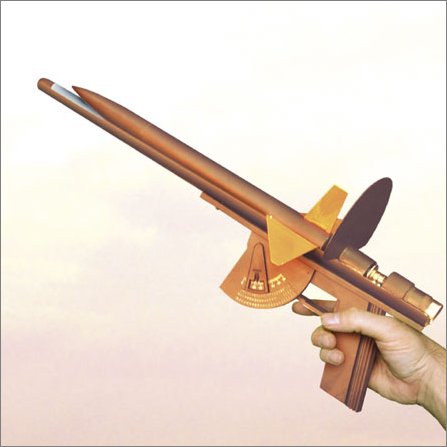Asian manufacturers are carving themselves out a niche for close- and short-range tactical UAVs. Now they want a larger slice of the global market
Long-standing involvement in the unmanned air vehicle sector by a variety of Asian aerospace and defence manufacturers has seen increasingly ambitious concepts in the high- and medium-altitude class in recent years. To date, however, none of those programmes have progressed beyond the design stage because of their high development costs and a limited customer base beyond immediate national requirements.
|
| Integrated Dynamics developed the Desert Hawk two - vehicle system for Pakistani army |
Instead, Asian manufacturers are proving to be at their most successful in the close- and short-range tactical segments, largely on the back of military requirements and the relative accessibility of the technologies involved in this part of the UAV market. Asian manufacturers are also showing themselves to be emerging as genuine innovators here, led by firms such as Singapore Technologies Aerospace and the South Korean-based Ucon Systems. Out-of-the-box concepts have appeared, including a hand-launched mini-rocket UAV – designated Firefly – developed by Integrated Dynamics of Pakistan and released on to the international market late in 2005.
Positioning play
The emergence of the global UAV market is widely seen by Asia’s defence and aerospace sectors as presenting an opportunity for leveraging technical capabilities, and positioning for larger roles in the development of an expected global civil UAV systems market. Translating those aspirations into practical industrial programmes, however, is presenting challenges.
In an unusually revealing presentation at the Unmanned Systems Asia Pacific 2006 conference in Singapore last month, Dr Tan Jiak Kwang, ST Aerospace chief engineer and director, advanced systems, said: “When we began our UAV business we tried to mirror the vision of our commercial aviation business, which I think we can say we have achieved. ST Aerospace is the largest independent third-party MRO in commercial aviation. So we mirrored that vision and we tried to progress it. But almost immediately we realised it is a tough road ahead of us.”
ST Aerospace UAV study projects have included almost the full spectrum of air vehicle concepts, ranging from high-altitude, long-endurance to small hand-launched tactical systems. Key programmes include the Fantail vertical take-off and landing short-range UAV, the Skyblade series of hand-launched short-range air vehicles and a larger catapult-launched tactical derivative, and the MAV-1 low observable tactical UAV demonstrator, which is now part of a swarming UAV demonstration effort.
The company would like to continue to widen its efforts, Tan said, but faces practical challenges ranging from limited airspace access due to Singapore’s small size through to the reality that “as a new player, we are competing against many of the big players”.
ST Aerospace’s approach to the market has emphasised unconventional configurations Tan said, with a view to exploring and opening up new niches in the overall UAV market. However, that approach has posed its own challenges in that “with unconventional configurations, the limitation is that we don’t have enough aerodynamics databases”.
Prototype development has emphasised commercial-off-the-shelf components to reduce prototyping and production costs. However, “the use of COTS components has got us into some trouble because some of those are not ruggedised”. Tan said issues had also emerged over the performance and reliability of COTS components, with this affecting some servo and sensor subsystems, as well as with electromagnetic compatibility and interference, software release and integration of COTS items into an overall architecture.
The emphasis on unconventional designs has also meant that there has been a lack of suitable subsystems that could be adapted for use, with problems including size, weight, cost and availability. This led to requirements for ST Aerospace to develop its own flight-control computer and sensor board, and payload pan/tilt mechanisms, while datalinks were required to be extensively customised.
Even with these technical hurdles being resolved, there remains the practical problem of ensuring that systems developed meet potential user expectations, Tan said. A key lesson is that “UAV developments require the co-learning of the user”.
Tactical systems
The focus on tactical requirements by many of Asia’s UAV developers reflects the ongoing modernisation of defence forces across the region and the benefits that such systems can bring to the modern battlefield. As well as the new ST Aerospace designs unveiled at Asian Aerospace last month, significant new systems recently unveiled within the region include a vertical take-off and landing vehicle by Ucon Systems, and two hand-launched UAVs developed by Integrated Dynamics with a third, a micro-UAV, in development.
Integrated Dynamics started work on the Desert Hawk in late 2003 in response to Pakistani army requirements, with a prototype first flying in late 2004. While the configuration has close parallels to the L-3 Communications-BAI Aerosystems Javelin, Integrated Dynamics says the design evolved independently, the air vehicle intended to be able to perform both powered and unpowered flight, with both internal-combustion and electric- engine options available. Endurance is around 2h.
|
| The Firefly mini-rocket UAV offers 8s flying time |
A standard Desert Hawk system, says Integrated Dynamics, comprises two air vehicles and a common portable ground control station. The two-air vehicle baseline is intended to support operations in environments where line-of-sight datalinks encounter terrain-masking problems, with communications relay-based missions demonstrated as part of the flight trials programme during 2005.
Integrated Dynamics began development of the Firefly mini-rocket UAV in late 2004 in response to Pakistani army operational requirements for a high-speed, short-range observation system that could be used in the high-altitude environments of northern Pakistan. A basic system costs around $3,000 and comprises four rockets, launcher, a carry case, datalink and a PDA-based ground control station.
The rocket UAV uses commercially available miniature solid-fuel engines that provide a flight time of 8s, with the air vehicle covering 800-1,000m (2,600-3,300ft) before disintegrating on impact with the ground. The rocket airframe is made of PVC plastic with snap-on glassfibre fins for stabilisation. The payload is a fixed focal-length disposable CCD video camera and a 1.5Ghz L-band datalink. Flight testing for the system began in mid-2005.
Subsystems used in the Firefly are also supporting development of a hand-launched micro-UAV, with flight testing about to start. That system is based around an 200mm (8in) flying wing made of vacuum-moulded plastic. Endurance is expected to be around 30min. Range is forecast at 1km (0.5nm).
Integrated Dynamics says the bulk of its avionics and mission systems, including data and communications links, have been developed in-house. However, for its smaller UAVs, it is working with Colarado-based UAV Flight Systems to meet autopilot requirements. Development work in the tactical segment, Integrated Dynamics says, offers the company potential market as a supplier of subsystems and components – even airframes – to more established UAV manufacturers and users and this market is being pursued in parallel to full systems development.
A parallel opportunity is seen in supplying UAV subsystems to other nascent supplier nations, with Integrated Dynamics particularly targeting the United Arab Emirates as a customer given that nation’s aspirations of becoming a major UAV supplier in the medium to long term. A similar market strategy is being pursued by Ucon Systems, which has carved out a niche role as the primary supplier of ground control station expertise to the UAE air force’s UAV research and technology centre (Flight International, 13-19 December 2005).
Ucon Systems has its origins with a group of former Korea Aerospace Industries experts who worked on that firm’s Night Intruder 300 tactical UAV development programme and later set up their own company in 2001 to explore alternative UAV concepts.
Hand launched
The company’s initial focus was a hand-launched, close-range UAV, designated Remote Eye (Remoeye) 06, and the commercialisation of the Korea Aerospace Research Institute’s Durumi long-endurance, low-altitude small UAV. The company has since unveiled another hand-launched system, designated Remoeye 02, which is in service with the UAE special forces. The company hopes for a production contract this year from the UAE army for fielding of Remoeye 06 to regular units.
Late last year Ucon Systems unveiled a development programme for its H120 vertical take-off and landing UAV, with the first prototype starting remotely operated flights in August 2005. The UAV has a 3m main rotor blade with top speed forecast at 65kt (120km/h). Maximum take-off weight is 120kg (265lb), including a 30kg payload.
The air vehicle is intended to operate over a 50km radius with an endurance of around 2h. Development of a fully autonomous version of the vehicle is under way, with the system expected to be production-ready in the second quarter this year.
VTOL legacy
VTOL concepts have a particular role in the Asian market context. Efforts by the wider global UAV community to develop and open up a civil UAV market have been heavily influenced by the commercial success of the Yamaha RMAX series of unmanned agricultural helicopters, originally developed in Japan. That UAV family has since gone on to be used by scientific and industrial research organisations around the world as an off-the-shelf testbed and flight platform for their own autonomous guidance, payload and mission systems.
Japanese domestic requirements remain the largest civil UAV market globally. Total unmanned agricultural helicopters registered by Japanese authorities for use domestically reached 2,005 in 2005, with the bulk of these built by Yamaha. In 2004 the Japanese market trendline also saw the number of UAVs involved in crop spraying surpass the number of manned helicopters used in that same role.
Yamaha’s success however, is now also highlighting the challenges of technology proliferation as UAV development becomes more commonplace across Asian nations. In January, Japanese police raided the offices of the parent Yamaha Motor as part of an ongoing investigation into the alleged export of nine RMAX series unmanned air vehicles to China since 2001 via a company called Beijing BVE Technology.
In a statement issued on 23 January, Takashi Kajikawa, president of Yamaha Motor, acknowledged that the company has been “placed under investigation by the Shizuoka Prefecture Police, Fukuoka Prefecture Police and Nagoya Regional Customs.... It has been alleged that Yamaha Motor is in violation of Japan’s foreign exchange and foreign trade laws regarding the export of unmanned helicopters to China.”
Yamaha has declined to comment further on the investigations.
PETER LA FRANCHI / LONDON
Source: Flight International





















